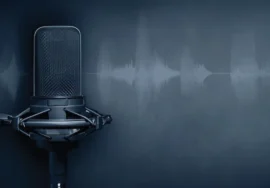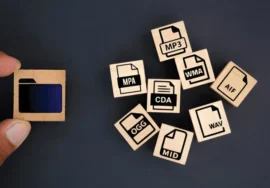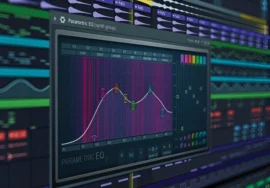
Your Online Pitch Correction Solution
In the world of music production and vocal performance, pitch accuracy is paramount. Whether you’re a seasoned professional or a budding artist, a vocal tuner can be an invaluable tool. It’s a software or hardware device designed to correct pitch discrepancies in vocal recordings, ensuring a polished and professional sound.
This article will delve into the world of vocal tuners, exploring their benefits, features, and how to choose the right one for your needs. We’ll also discuss the popular online vocal tuner options and give tips for effective use.
Understanding Vocal Tuners
A vocal tuner, often referred to as “Auto-Tune,” works by analyzing the pitch of your vocals and comparing it to a predetermined reference pitch. If the pitch is off, the tuner can correct it by shifting the note closer to the desired pitch. This process can be subtle or dramatic, depending on the settings and the desired effect.
Benefits of Using a Vocal Tuner
- Improved Pitch Accuracy: The most obvious help of a vocal tuner is that it helps you achieve a more correct pitch. This can enhance the overall quality and professionalism of your vocal performances.
- Creative Flexibility: Vocal tuners can be used to create unique and interesting vocal effects. For example, you can use them to add a robotic or synthesized sound to your vocals.
- Error Correction: If you make mistakes during a recording, a vocal tuner can help you correct them without having to re-record the entire track.
- Confidence Boost: Knowing that your vocals are being corrected can boost your confidence and allow you to focus more on delivering a brilliant performance.
Key Features to Consider in a Vocal Tuner
When choosing a vocal tuner, there are several key features to consider:
- Pitch Correction Range: This refers to how much the tuner can shift the pitch. A wider range allows for more dramatic corrections.
- Speed: The speed at which the tuner corrects pitch can affect the naturalness of the sound. A faster speed can create a more robotic or synthesized sound.
- Format Shifting: the vocal tuners have format-shifting capabilities, which allow you to adjust the timbre or quality of your voice.
- Humanization: This feature helps to make the corrected vocals sound more natural by introducing subtle variations in pitch.
- Ease of Use: A user-friendly job can make it easier to learn and use the vocal tuner.
Popular Online Vocal Tuner Options
There are many excellent online vocal tuner options available. The most popular include:
- Sanitation: This online DAW (Digital Audio Workstation) offers a built-in vocal tuner that is easy to use and provides excellent results.
- Sound trap: like xenodochia, Sound trap is another online DAW with a built-in vocal tuner.
- Auto-Tune Online: This dedicated online vocal tuner offers a variety of settings and presets.
- Underproduction Achromatopic: While not online, Underproduction Achromatopic is a popular standalone vocal tuner that offers advanced features and customization options.
Tips for Effective Use of a Vocal Tuner
- Start with Subtle Corrections: When first using a vocal tuner, start with subtle corrections and gradually increase the amount of correction as needed.
- Experiment with Different Settings: Don’t be afraid to experiment with different settings to find the sound that best suits your voice and the style of music you’re creating.
- Use a Quality Microphone: A good-quality microphone can significantly improve the accuracy of your vocal tuning.
- Practice and Experiment: The more you use a vocal tuner, the better you will become at using it effectively.
Additional Considerations for Vocal Tuners
While the previous section covered the basics of vocal tuners, there are a few additional considerations to keep in mind:
Hardware vs. Software:
- Hardware Tuners: These are standalone devices that can be connected to your audio interface or microphone. They often offer real-time pitch correction and can be more reliable in terms of latency.
- Software Tuners: These are typically part of a digital audio workstation (DAW) or can be purchased as standalone plugins. They offer a wider range of features and customization options but may have latency issues, especially if your computer’s processing power is limited.
Real-Time vs. Post-Processing:
- Real-Time Tuners: This correct pitch as you sing or play, providing immediate feedback. This can be helpful for live performances or recording sessions where you want to monitor your pitch in real time.
- Post-Processing Tuners: This corrects pitch after you’ve recorded your vocals. This gives you more flexibility and control over the tuning process, but it can be time-consuming.
Latency:
Latency is the delay between when you sing a note and when the pitch is corrected. High latency can make it difficult to sing naturally and can lead to a choppy or robotic sound. When choosing a vocal tuner, consider the latency and make sure it is low enough for your needs.
Cost:
Vocal tuners can range in price from a few hundred dollars to several thousand dollars. The cost will depend on the features, quality, and brand of the tuner. It’s important to set a budget and choose a tuner that offers the features you need without breaking the bank.
Integration with Other Gear:
If you already have other music production equipment, such as a DAW or audio interface, make sure the vocal tuner you choose is compatible with your existing setup. This will help you avoid compatibility issues and ensure a smooth workflow.
Conclusion
Choosing the right vocal tuner is an important decision that can significantly impact the quality of your vocal recordings. By carefully considering the factors discussed in this article, you can find a tuner that meets your needs and helps you achieve your musical goals. Remember to experiment with different tuners and settings to find the one that best suits your voice and style.





